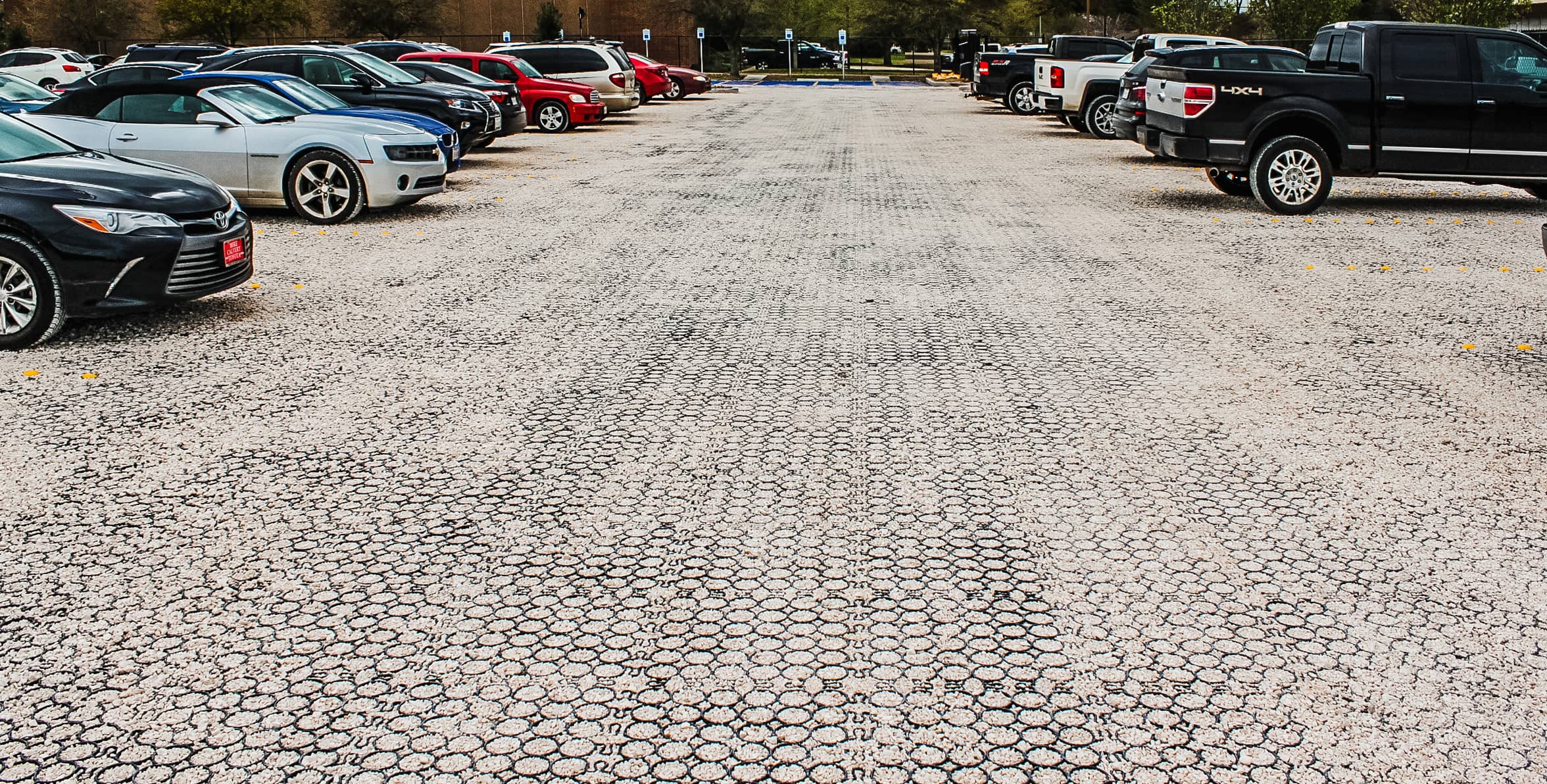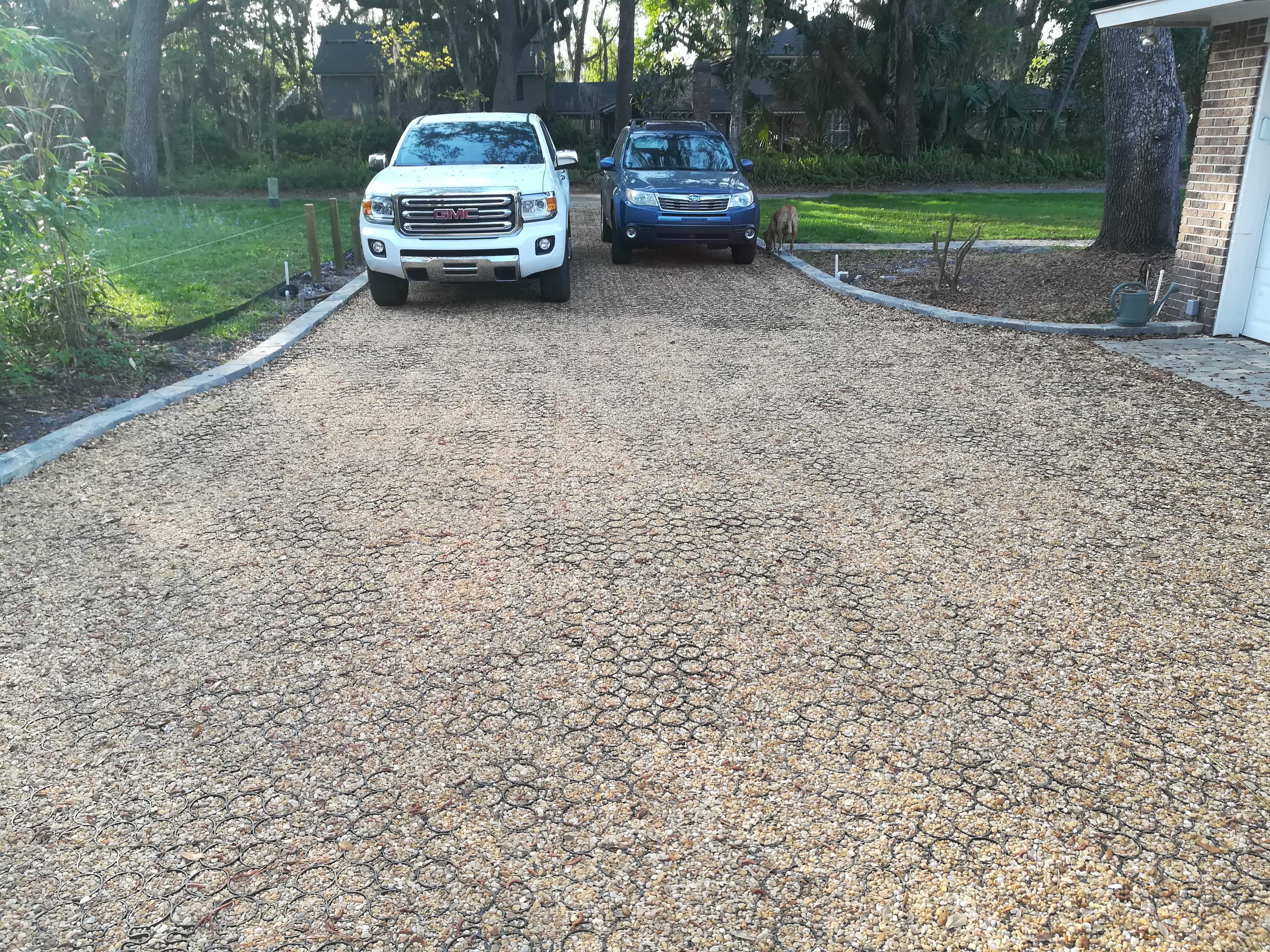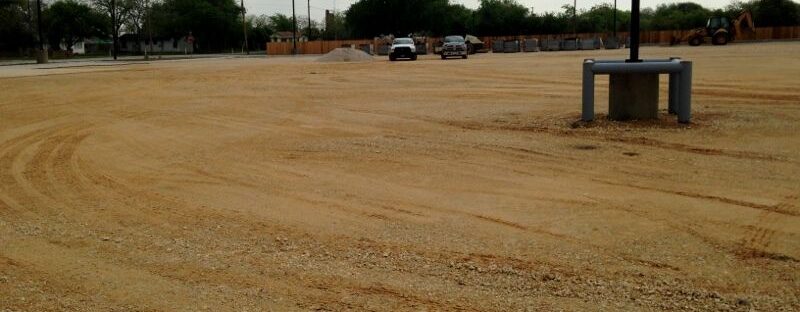
Outdoor paths guide how people move through a space—shaping both flow and function. Some paths are built to last, with designs that flex with the land instead of fighting it. For many property owners and professionals, garden path pavers offer a sustainable, low-maintenance way to build smarter landscapes.
How Outdoor Paths Become Functional Features
A walkway does more than connect one area to another—it reinforces planting beds, manages water movement, and helps shape circulation. When modular hardscape components are used, the ground beneath remains stable, and the surface resists wear. In spaces where runoff or repeated use causes erosion, grid-based pavers provide strength that loose gravel or poured concrete rarely delivers consistently.
Because of their flexibility, these surfaces outperform rigid materials like concrete in areas where ground movement is likely. Seasonal shifts, moisture changes, and uneven terrain are better handled by a system designed to flex and adapt over time.
Layout Strategy That Matches Your Site
Before starting, it’s important to evaluate how the walkway will interact with its surroundings. Backyard patios and commercial pathways alike benefit from designs that follow natural movement patterns, creating flow and ease of use. Straight runs often work well for formal gardens, while curved layouts suit organic planting zones.
Factors like drainage, sunlight, and slope should all be considered during planning. A slight grade may seem harmless, but without stabilization, it can lead to long-term erosion or washout.
Planning for Slope and Subsurface Flow
On sloped terrain, proper water handling is critical. Drainage must move through, not under, the system to prevent damage. This is managed by compacting the base in layers, using interlocking grid panels, and reinforcing low spots where runoff tends to collect.
Even modest elevation changes can affect structural performance. When water pressure increases, grid reinforcement keeps the materials in place and allows water to filter vertically instead of building pressure underneath.
Ground Prep and Base Stability Matter

Excavation depth must account for both the aggregate base and surface system. Most sites will require 4 to 8 inches, depending on soil composition and load expectations. Angular crushed gravel is ideal for the subbase—it compacts tightly and allows consistent water flow.
Each layer should be compacted before the next is added. Without this step, freeze-thaw cycles or sustained foot traffic may create uneven areas. In higher-use zones, a plate tamper helps create uniform density and minimizes future maintenance, especially when installing garden path pavers that need to perform season after season.
Tools and Materials Checklist for DIY Installers
A smooth installation starts with the right materials on hand and a clear understanding of each component’s role.
- TRUEGRID paver panels
- Geotextile fabric
- Crushed gravel for base
- Gravel for infill
- Rake, shovel, and wheelbarrow
- Stakes or string line
- Spray paint for layout
- Plate compactor or manual tamper
- Optional edging materials
Step-by-Step Guide to Installing Garden Path Pavers
Once the layout and materials are ready, the installation follows a clear, repeatable process that can be managed with basic tools.
- Mark your layout using string and spray paint.
- Excavate the area to the target depth. Compact the area.
- Lay geotextile fabric to suppress weeds and stabilize layers.
- Add crushed gravel in stages and compact after each layer.
- Position the grid panels snugly, locking them together edge-to-edge.
- Fill the grid surface with gravel until flush with the panel top.
- Compact the surface again and apply edging if needed.
These steps are manageable with basic tools. Many homeowners complete the build themselves, especially since gravel can be hand-raked to shape or taper edges into nearby plantings.
Many of these installations follow the same process shown in TRUEGRID’s DIY walkway system, which breaks down each step with real-world examples.
Long-Term Performance on Varied Terrain
Steep or sloped areas bring added challenges. Downhill water flow can quickly destabilize unsupported materials. The use of permeable grid systems in garden path pavers solves this by creating mechanical interlock and drainage in one layer.
Often on steeper slopes,the grids benefit from additional anchoring support with the use of galvanized ring-shank nails or other stakes.
On uneven ground, even distribution of base compaction becomes more important. Proper setup creates stable surfaces that resist settling, rutting, and displacement, even during high rainfall or freeze cycles.
How Paths Fit Into Landscape Design

Walkways should work in harmony with their surroundings. When planned correctly, the surface becomes part of the environment, complementing nearby plants, borders, and natural contours. Curved lines, gravel color selection, and intentional planting gaps help soften the structure and tie it into surrounding features.
Where trees and deep roots are present, the flexible panels adapt without excavation. This makes them useful in older yards or protected green zones, where traditional digging might damage the site.
These same modular designs are also used in a variety of garden paving applications, where durability and low environmental impact are critical.
Why Sustainable Path Systems Are Gaining Ground
Permeability isn’t just a bonus—it’s a requirement in many areas. Systems that allow rain to move directly into the soil reduce stormwater volume and support healthy vegetation. By contrast, solid surfaces like poured concrete often create runoff problems.
In commercial or code-regulated projects, permeable installations can offset detention requirements. For this reason, many specifiers now treat drainage capacity as a key design metric, not an afterthought.
Practical Design for DIY and Professional Installs

TRUEGRID systems are user-friendly but engineered to perform under demanding conditions. Contractors often choose them for high-traffic areas, while homeowners value the ability to fine-tune layout and appearance without concrete forms or excavation equipment.
Because the materials are modular, paths can be reshaped, extended, or reworked without removing the whole system. This adaptability supports long-term use without locking users into a single layout.
TRUEGRID PRO LITE: Tailored for Garden Paths
For walkways that prioritize both ease of use and dependable performance, TRUEGRID PRO LITE is a strong fit. Manufactured from 100% post-consumer recycled HDPE, PRO LITE supports foot traffic and light vehicles without sacrificing drainage. Its interlocking panels are light enough for DIY installation and strong enough to stay put under real-world use.
Filled with gravel or grass, PRO LITE integrates easily into a wide range of outdoor designs, adding structure without taking away from the landscape. The panel depth and integrated locking tabs make it ideal for residential paths where durability and sustainability go hand in hand.
Keeping Your Path Clean and Functional Over Time
TRUEGRID systems require very little maintenance, but a few simple habits can extend the life and appearance of your path. Prevent sediment runoff from other areas such as downspouts or surface water from delivering particulates to the TRUEGRID. Another good practice is to examine the adjacent vegetation and make sure any edging is preventing weeds or grass from encroaching into the path.
Most seasonal upkeep can be done in under an hour and doesn’t require any special tools or treatments. For homeowners and commercial users alike, this low-effort approach means the path performs just as well in year five as it did on day one.
These systems are often featured in sustainable landscaping designs, where permeability and erosion control support long-term site health.
Common Challenges and How to Prevent Them
Even well-built paths can face occasional issues, but most are easy to avoid with proper preparation and system design.
Shifting Edges:
Loose gravel can spill beyond the intended boundary if it’s not contained. Using steel, composite, or stone edging controls this without interrupting drainage.
Soft Base Conditions:
Poor soil compaction causes dips and puddling. Compact each base layer thoroughly to avoid this problem.
Debris Buildup:
Leaves, pine needles, and dirt can block infiltration. Occasional surface cleanup restores flow and keeps the surface looking clean.
Weeds:
Although TRUEGRID is mostly inhospitable to vegetation, weeds can sometimes find a way to grow through over time. Use of geotextile fabric when installing, clean stone fill, and clean base material will do their part to mitigate weed growth. If weeds do appear, it’s recommended to use an environmentally friendly herbicide mix or pull the weeds by hand.
These challenges are rare but preventable. With a well-prepared site and the right materials, TRUEGRID systems remain stable under pressure.
Support Functional Landscaping with TRUEGRID Garden Path Solutions
TRUEGRID offers a selection of paving systems that support load-bearing stability without sacrificing permeability. Their solutions provide a long-lasting, low-maintenance foundation for outdoor footpaths, especially in areas where water management or erosion control is a priority. Contact us today for more information.



